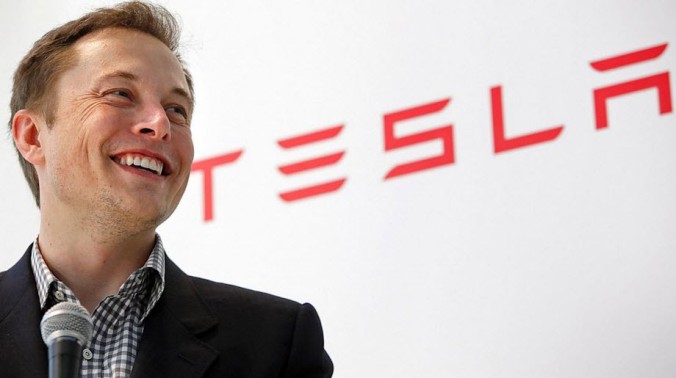Tesla Motors, founded by entrepreneur Elon Musk, is an innovative electric car manufacturer, and has partnered with other companies that Musk has founded (SpaceX, Hyperloop, Solar City). Based in Silicon Valley, California, Tesla is breaking the mould of the established car manufacturing industry, by launching innovative electric vehicles that is now disrupting the way the automotive industry has been doing business for decades. This includes re-defining the traditional dealership distribution model, that customers worldwide, have been accustomed to for generations.

Elon Musk, founder, and CEO of Tesla Motors
So, what is Tesla upto?
Tesla commenced their foray into electric car manufacturing over 12 years ago, buying a decommissioned General Motors plant in California, and receiving backing from venture capitalists to develop a premium electric car. They then partnered up with Lotus, and importantly, Panasonic, to develop new innovative batteries, which now give Tesla the edge over their rivals in the electric vehicle market. Tesla’s first car was the Roadster with a $100K plus price tag, however they are now producing vehicles which are more practical, with the Model S sedan, priced at a more affordable US $70,000, and a goal to have a car in the US $35,000 price point by 2017.

The Tesla Model S
Tesla’s Distribution Model
Anyone who has purchased a new vehicle understands that up until recently, and for all combustible engine models, one must purchase from a vehicle dealership. This traditional form of distribution channel, as referenced by Iacobucci (2013), takes the form of a manufacturer via a retailer (in this case a dealership). The customer then having settled on a vehicle, negotiates on price, specifications, and delivery timing.
Tesla have turned this upside down, and have taken the Dell approach of manufacturer direct to consumer, a somewhat revolutionary step in the automotive sector. Tesla uses shopping centres, and online platforms to market and sell cars, instead of partnering with dealerships. This brings Tesla greater control of the process (including pricing and promotion), having bypassed the traditional dealership.
This however does have its drawbacks. As Lemkin in Forbes (2013) states, the reason companies of all sorts in all industries have channel partners is in large part to not have to deal with the logistics of dealing with tons of tiny customers. Perhaps as Lemkin details, dealers, in theory, could take the burden here, however it’s clearly a strategy Tesla is not interested in.
Shopping Centres and Charging Stations
Tesla started out using shopping centres to market and sell their cars to differentiate themselves, to build the right product-market fit and to control the experience. Hirsch, (2012), in interviewing George Blankenship, VP of Worldwide sales for Tesla, quoted that Tesla’s sales strategy is very different from the rest of the automotive industry, “we put our stores in high foot traffic locations so we can tell as many people as possible about Tesla’s incredible cars”. You will therfore see Tesla stores in highly visible, premium outlets in major ‘trend-setting’ metropolitan markets (just the market Tesla wants). These stores were originally in the US, and now worldwide, including Chadstone Shopping Centre in Melbourne.
Along with the unconventional distribution model, is the need for charging stations. As Stringham et al (2015), states, Tesla has reported that one of the most common customer questions on purchasing a vehicle is about servicing the cars, and to address this concern, Tesla has built and is expanding Tesla owned-and-operated service centers.

Example of a Tesla outlet in a shopping centre
Will this distribution model ultimately be successful?
Evidence so far suggests that this model is successful, as evidenced by Tesla’s long back order book, and desire to target the demographic who frequent high-end shopping centres. It has however been found that car manufactures have tried the direct approach many times over the years and failed. Hirsh (2012), comments that Porsche tried it 25 years ago, and Ford & GM in the 1980s and 1990s. These examples though did not have break through electric vehicle technology, and the element of customization was also non-existent. There have already been other companies who have mimicked the Tesla approach in recent years, with Infiniti opening pop up shops in shopping centres in Australia.
Time will tell how Tesla will perform, however with the pedigree of Musk, and the halo of Silicon Valley entrepreneurship behind it, the future looks promising.
Author Lachlan Cruise WordPress ID @lcruis. Deakin University ID 2000129368 lcruis@deakin.edu.au
References
CNN Money, Tesla reveals its $35,000 car for the masses, http://money.cnn.com/2016/04/01/luxury/tesla-model-3/ viewed 15 May 2016
Drive, Tesla to Open Retail Stores in Australian Shopping Centres, 2014, http://www.drive.com.au/motor-news/tesla-to-open-retail-stores-in-australian-shopping-centres-20141209-123o9q.html#ixzz48j1mpUZ5, viewed 15 May 2016
Forbes Magazine, http://www.forbes.com/sites/quora/2013/06/04/why-doesnt-tesla-use-dealerships-to-sell-their-vehicles/#248a9b8561d7 viewed 15 May 2016
Go Auto, Infiniti pops up for Christmas http://www.goauto.com.au/mellor/mellor.nsf/story2/6AA18A8E045BDF53CA257DA8000BDB46 viewed 16 May 2016
Graves, B 2013, ‘Tesla Takes a Shortcut With Direct Sales Route’, San Diego Business Journal, vol. 34, no. 30, pp. 1-36
Iacobucci, D (2013) ‘MM4’ South-Western, Cengage Learning, USA.
Hirsh, L 2012, ‘Tesla motors puts itself in the middle of mall’s foot-traffic’, San Diego Business Journal, 37, p. 10, General OneFile, EBSCOhost, viewed 15 May 2016
Stringham, EP, Miller, JK, & Clark, JR 2015, ‘Overcoming Barriers to Entry in an Established Industry: TESLA MOTORS’, California Management Review, vol. 57, no. 4, pp. 85-103. Available from: 10.1525/cmr.2015.57.4.85. viewed 16 May 2016
Tesla Motors, The Tesla Approach to Distributing and Servicing Cars, 2012 https://www.teslamotors.com/en_AU/blog/tesla-approach-distributing-and-servicing-cars viewed 15 May 2016
Wall Street Journal, Huge Backlog Leaves Tesla Little Time to Ramp Up Model 3 Productionhttp://www.wsj.com/articles/huge-backlog-leaves-tesla-little-time-to-ramp-up-model-3-production-1459543280 viewed 15 May 2016